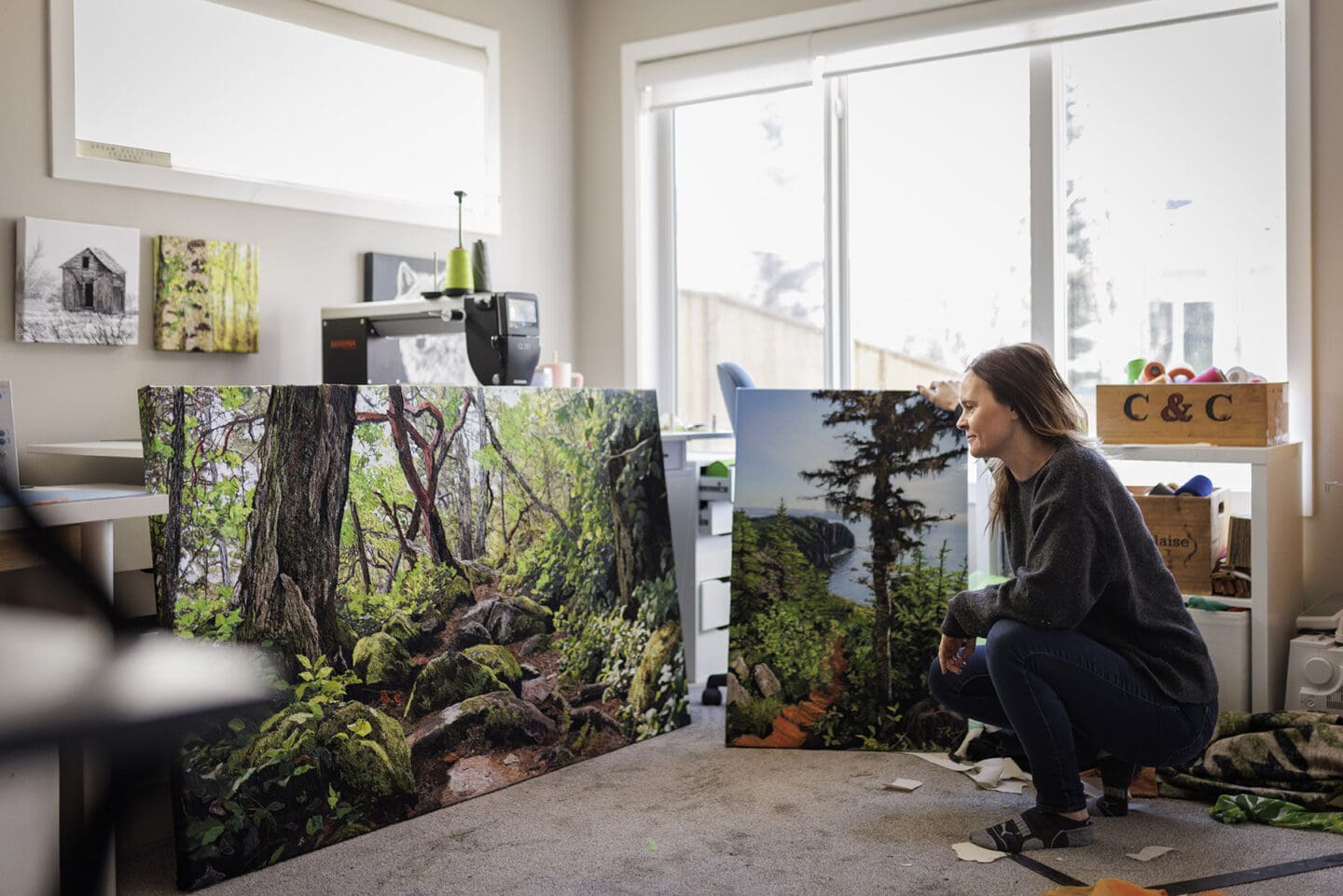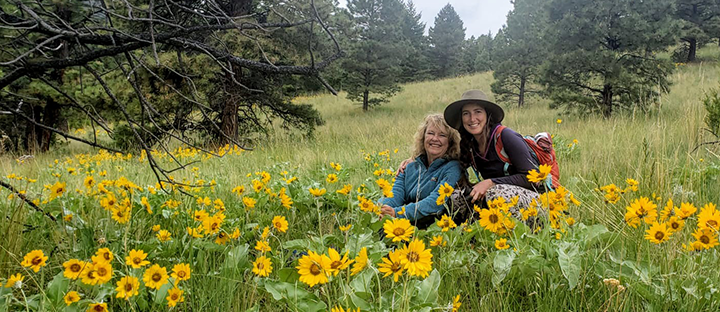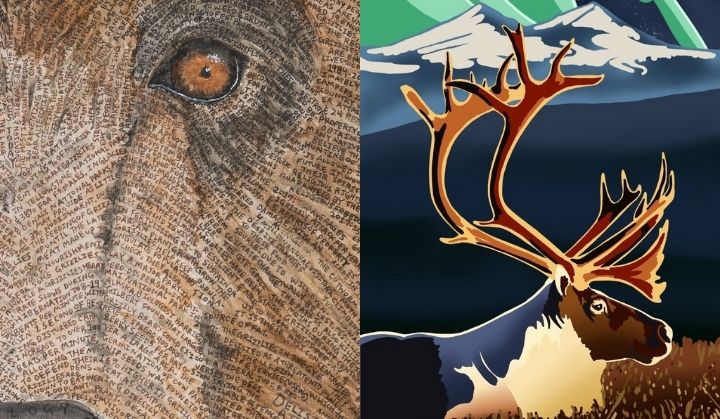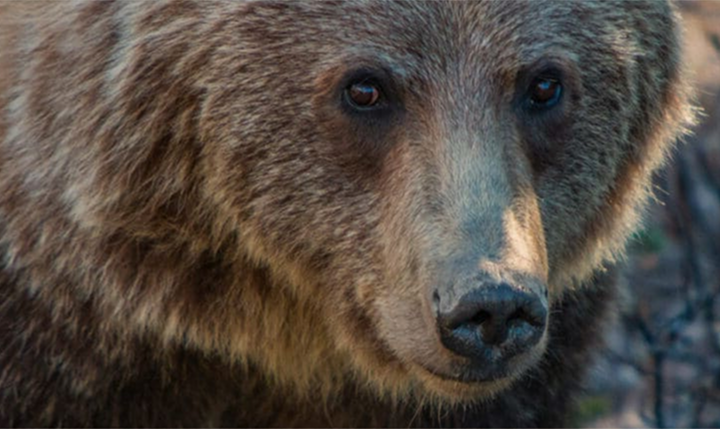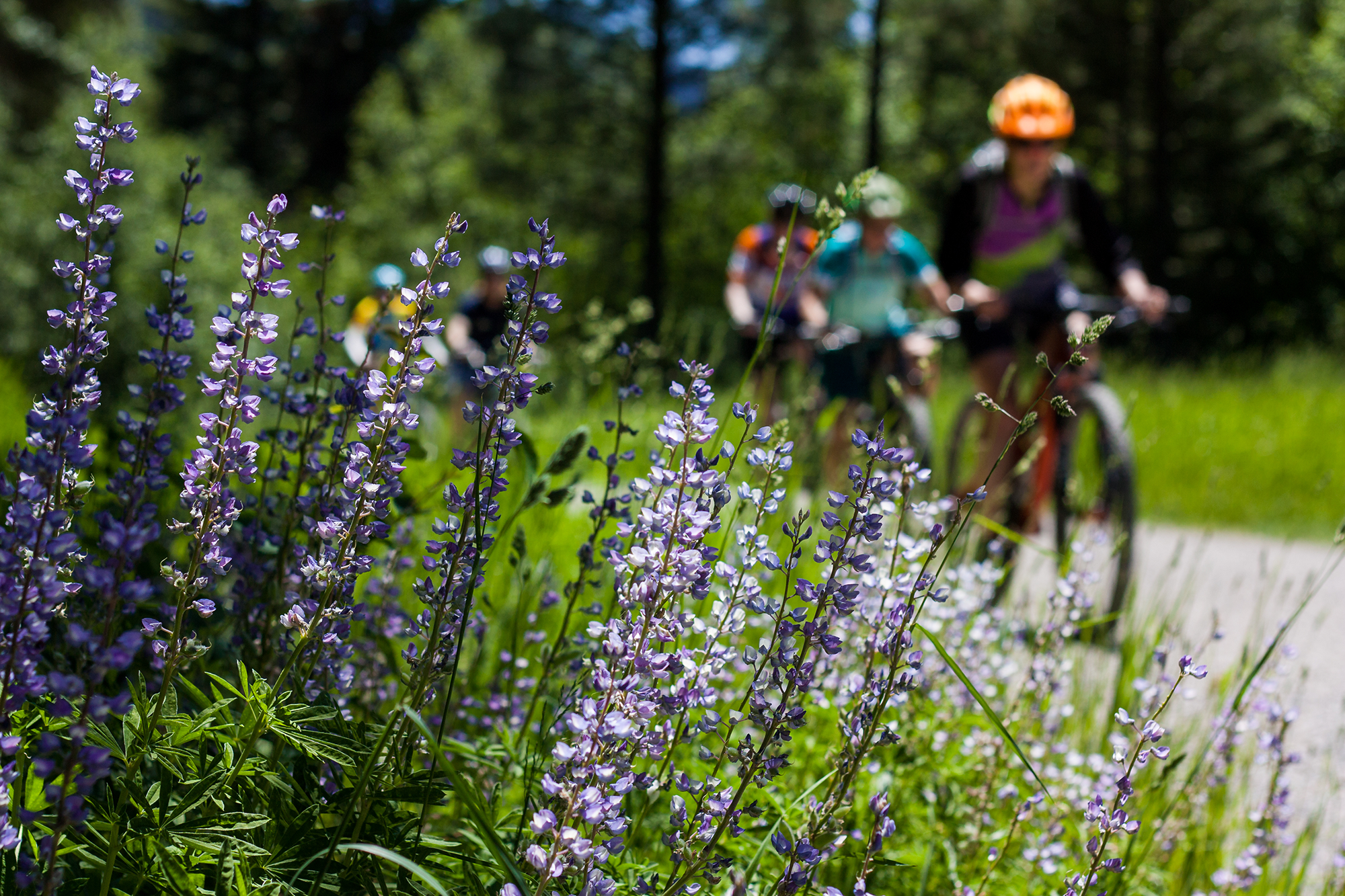For Alberta-based textile artist Alison King, art and nature are intertwined. Her intricate creations, carefully sewn images of wildlife and wild landscapes, capture not just how the Rockies look, but how they feel. Vast, peaceful, alive. Through her art, she invites us to reflect on our own connection to the wild and the responsibility we share to care for and protect it.
Read on for a question and answer interview with her.
Your textile art beautifully captures the spirit of the wild. What first inspired you to start sewing images of wildlife?
I’ve always had a deep appreciation for nature, but wildlife — especially capturing it in textiles — initially felt intimidating. I wasn’t sure I could translate the complexity of an animal into fabric and thread: the anatomy, the shadowing, and most importantly, capture the spirit.
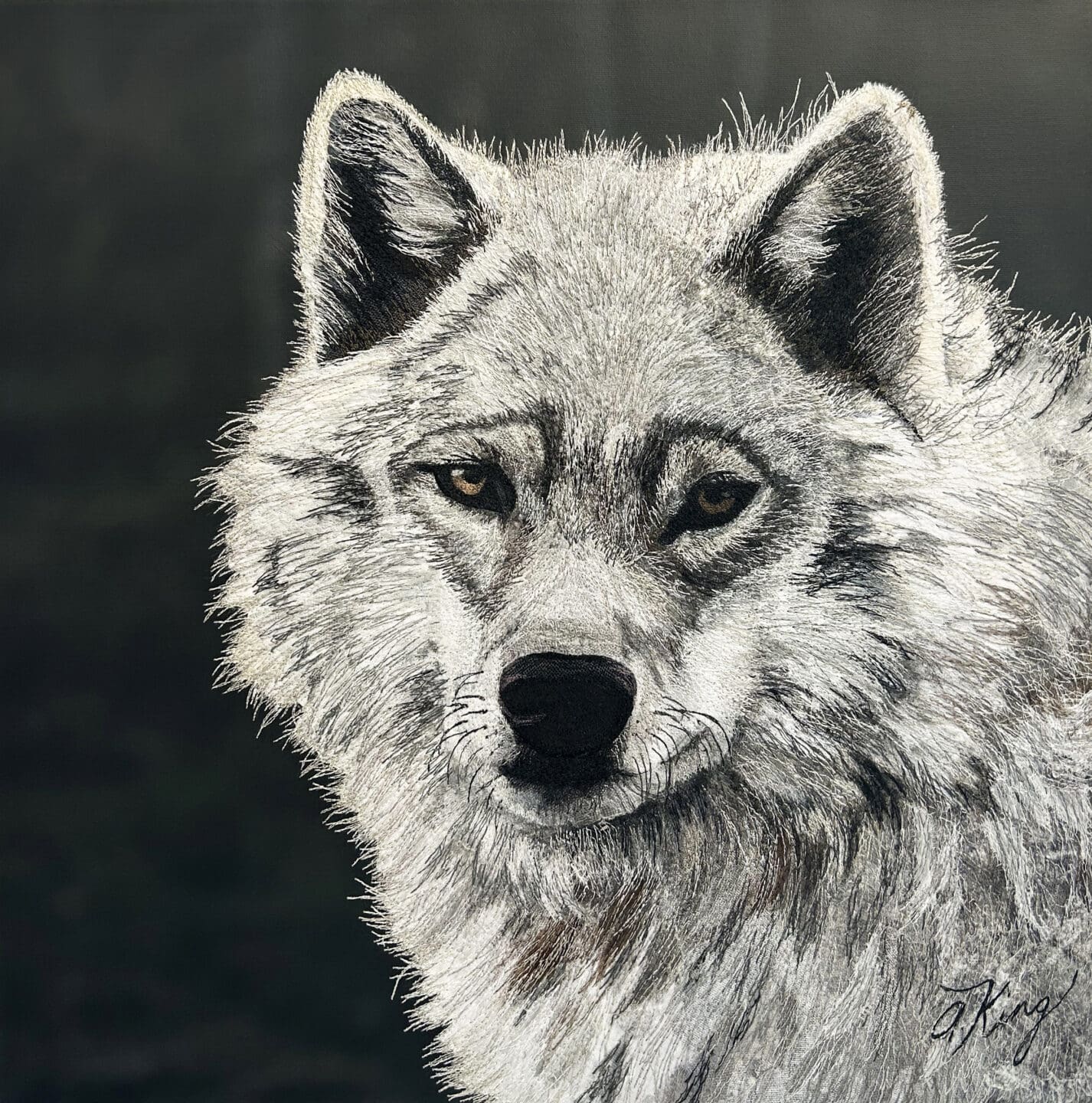
Was there a particular animal or experience in nature that sparked this journey?
I think an experience that stayed with me was when I visited Yamnuska Wolfdog Sanctuary, just outside Cochrane. It’s dedicated to the rescue and lifelong care of displaced wolfdogs with a focus on fostering connections between people, animals, and the wild. They provide a safe haven for wolfdogs that can’t be released back into the wild.
I found it very educational, breaking down a lot of the misconceptions about wolves and wolfdogs and highlighting the need for wildlife conservation. Being up close with these incredible animals was unforgettable. I had my camera with me, and I captured an image of Eska, a wolfdog with striking markings and I knew I wanted to create her.
Much of your work focuses on species found in and around Banff National Park in Alberta, Canada. What draws you to this landscape and its wildlife?
There’s something truly powerful about the landscape — the scale of the Rockies, the peace, the energy you feel walking a trail with only the sounds of nature. When I moved to Alberta, I was immediately struck by the raw grandeur of the mountains. Unlike in more developed areas, where animals are often accustomed to seeing people, the ones you encounter here feel wild and untamed. Surrounded by turquoise, glacier lakes, wildflowers and towering peaks — the landscape is so rich with texture — offering endless inspiration, and so much of what I look for in my subjects.
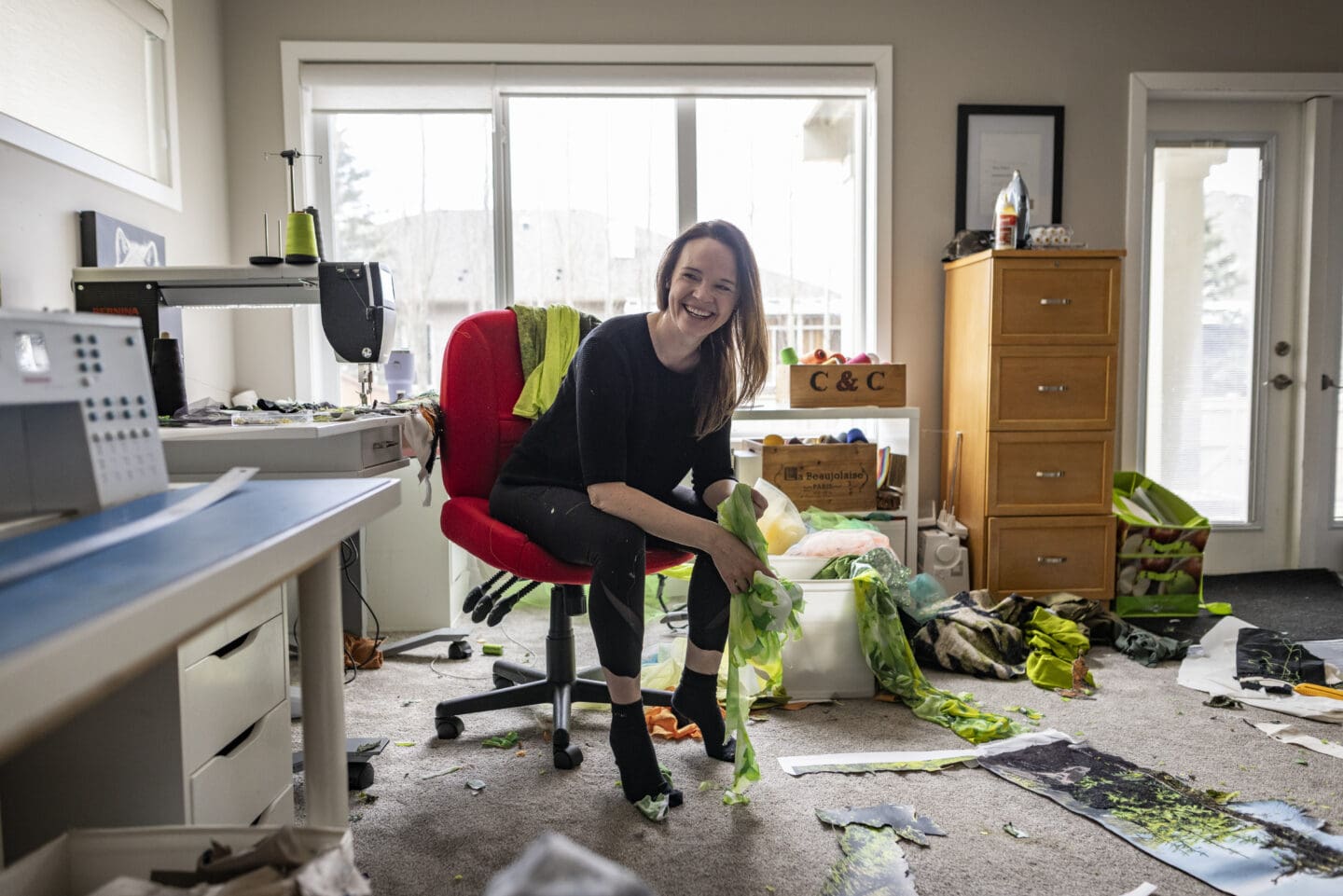
Are there particular species or places you feel especially compelled to protect or highlight through your work? Why?
I’m drawn to highlight Canadian wildlife and wild spaces, especially those closest to where I live. These are the places I walk, photograph, and draw energy from — they’re part of my daily life and deeply influence my art.
It’s an incredible gift to hike into such pristine beauty and encounter wild animals in their natural habitat. This is my home, and I feel a strong responsibility to protect and celebrate the remarkable beauty of this province and country.
Yet, all around us, the landscape is shifting — new roads, new subdivisions, constant development. Growth is part of life, but I believe there’s a tipping point, and I fear we are nearing it. Through my work, I aim to shine a light on what we still have: the powerful animals and the wild spaces they depend on. Because once these places are gone, they cannot be replaced. It would be heartbreaking to live in a world where we’ve paved over the very things that make it extraordinary.
“This is my home, and I feel a strong responsibility to protect and celebrate the remarkable beauty of this province and country.”
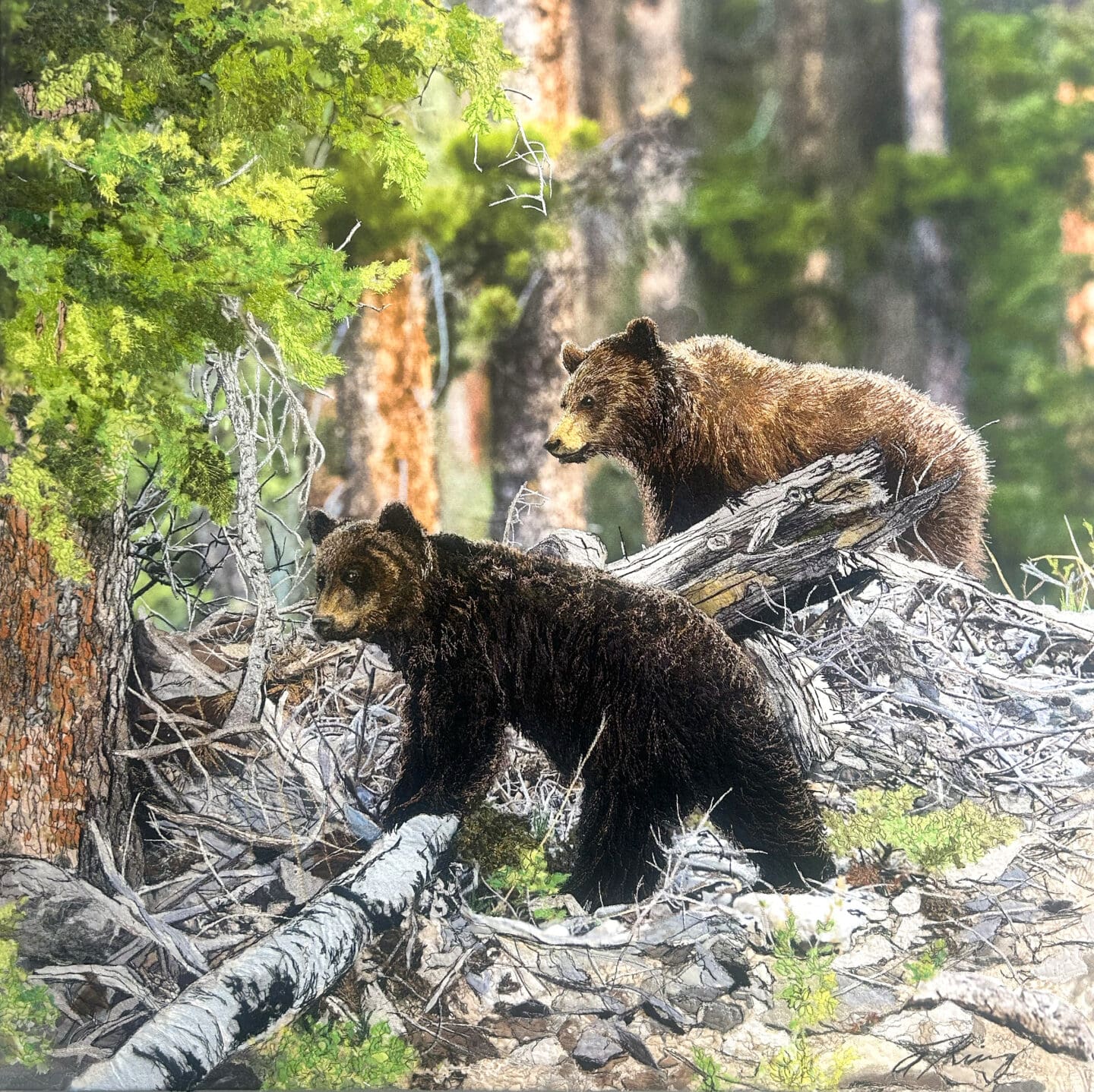
How do you choose which animals or scenes to portray in your work? Is there a story behind any of your favourite pieces?
I’m especially inspired by texture and light — the way shadows fall on the mountains, or how thread mimics the hair of a wolf’s coat.
One special piece I recently created is called The Curious Two, a collaboration with my friend and Canadian wildlife photographer Yael Versluys. Her image captured the two cubs of Jasper grizzly, GB222.
This bear family survived the devastating wildfires that tore through Jasper in 2024. GB222 protected her cubs by sheltering them in a wet area. For me the story is one of strength and extraordinary bravery of a mother bear — but also one of hope and resilience seeing these two cubs live on with wide-eyed curiosity.
Conservation is often about connection — between land, wildlife, and people. How do you see your art contributing to that sense of connection?
At its core, my work is all about connection. When I create, firstly, it’s an expression of the connection I experience while in the presence of my subject — whether that be walking through a forest, hiking a mountain, or encountering an animal in the wild.
As an artist, I’m then given the gift of seeing that connection spark in others when they view my work. Often it stirs memories of a time when they, too, felt deeply connected to a place in nature. It has the ability to stir up feelings, energy and connection to the animal it captures. It’s like when you look at something you love, or something that makes you feel nostalgic, or powerful or peaceful — art has that power.
It also has the power to open eyes to landscapes and wildlife that some may never experience firsthand yet can still connect to through the emotions it evokes. Through my work, I can bring the beauty of these species and places into the homes of those who love and cherish them. Sometimes, it also becomes a way of preserving moments in history — like the old farmhouses I’ve captured that now exist only in memory. The ability my work has to help others connect in these ways is something I find truly special.
What role do you think artists can play in conservation, especially at a time when landscapes and wildlife are facing growing pressures?
Artists have a unique ability to connect people to the natural world in an emotional and personal way through their work. Art can move us — it can make people pause, reflect, and see the world differently. In a time when wild spaces are shrinking and wildlife is under increasing pressure, that emotional connection is more important than ever.
As artists, we can hold up a mirror to what’s at risk of being lost. We can remind people of the immense beauty, complexity, and value of the natural world — not just as scenery, but as something alive, essential, and worth protecting.
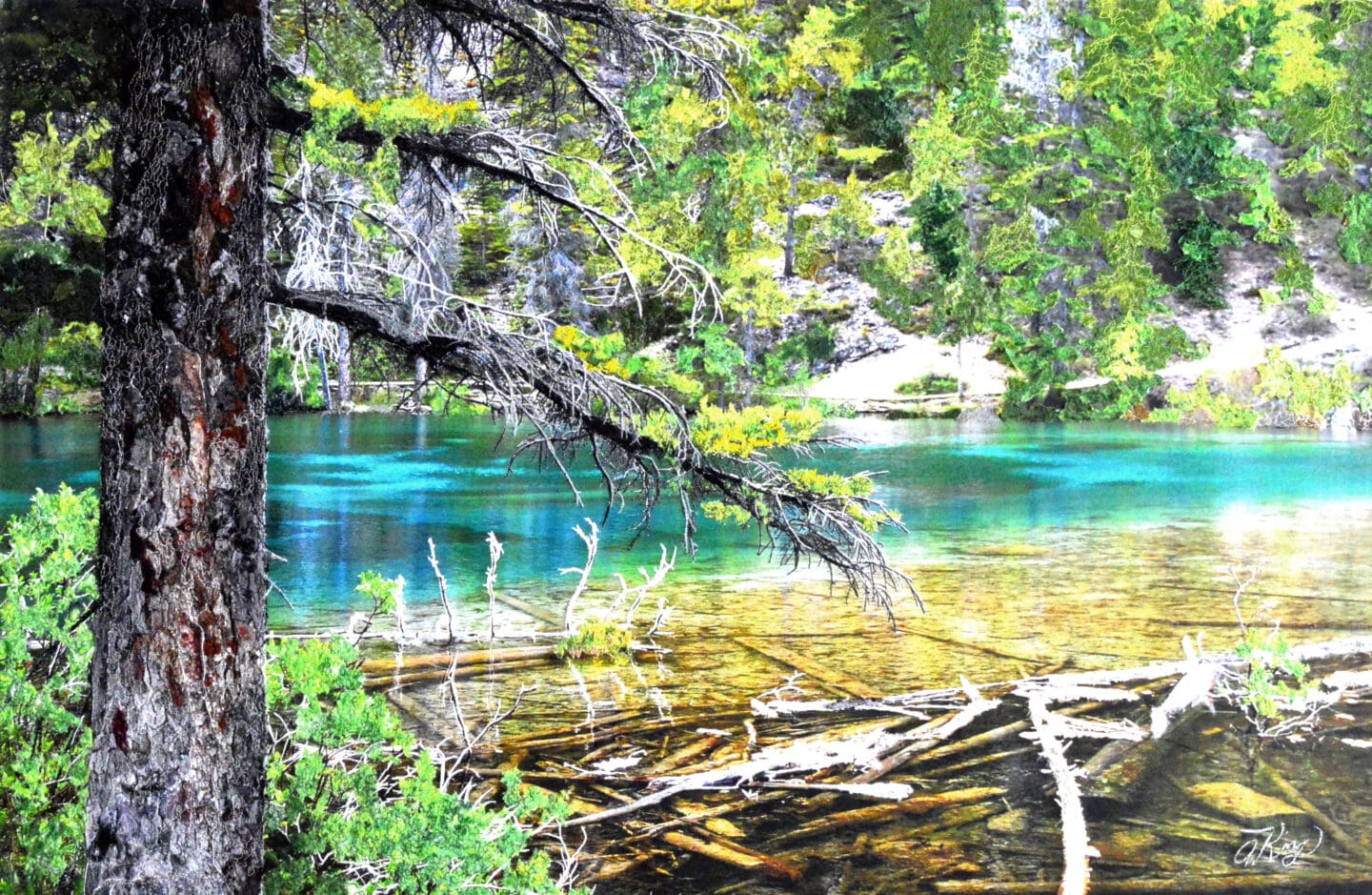
What does your creative process look like — from idea to finished piece? Do you spend time in the field observing wildlife before you begin?
Absolutely — I always spend time observing before I begin a piece.
I’m out walking trails, taking in the landscape, capturing wildlife, and collecting visual inspiration. Sometimes I work from my own images, and other times I use photographs from clients who’ve had meaningful encounters with wildlife or the landscape of their hometown. That allows me to not only explore my own connection to nature, but also to bring someone else’s experience to life through my work.
Because my pieces blend textile and photographic imagery, a lot of thought goes into deciding what to keep in the realism of the image, and what to recreate in textile. My process begins by layering cut pieces of fabric, manipulating them and using a free motion stitch technique to mimic the details and characteristics of my subject. I then combine elements of the image to blend these two mediums. It’s a detailed, time-consuming process, almost like assembling a puzzle, but I love it!
How do you hope people feel when they see your art? What message or emotion do you want to convey?
I hope they love it. I hope my own passion for creating it comes through. I hope it sparks joy, excitement, and connection. Art is personal and it should create a response in its viewer — I hope mine does.
I also hope people are struck by the unique combination of the medium itself — that they see textiles in a new light. It’s a form with endless creative possibility, and I love pushing the boundaries of what fabric and thread can do. At the end of the day, I want my work to honour both the wildness of nature and the quiet power of textile as an expressive art form.
More about the artist
Alison King is a textile artist located in Cochrane, Alberta, Canada, an hour east of Banff, in the heart of the Yellowstone to Yukon region.
With an early interest in art, she began classes at the age of 9, later studying graphic design and photography before ultimately finding her creative home in the textile program at the Ontario College of Art in Toronto.
Over the past 20 years, Alison’s detailed textile work has brought vibrant life to a wide range of subjects, from the textures of urban landscapes to the quiet power of wildlife and nature. Her unique approach blends textiles and elements of photographic imagery, creating pieces that are both evocative and tactile.
Explore more of Alison’s work at alisonking.ca and on Instagram at @alisonkingart.
At Y2Y, we’re grateful for supporters like you whose love for nature and the Yellowstone to Yukon region makes it possible to protect the landscapes and wildlife that inspire artists like Alison.
